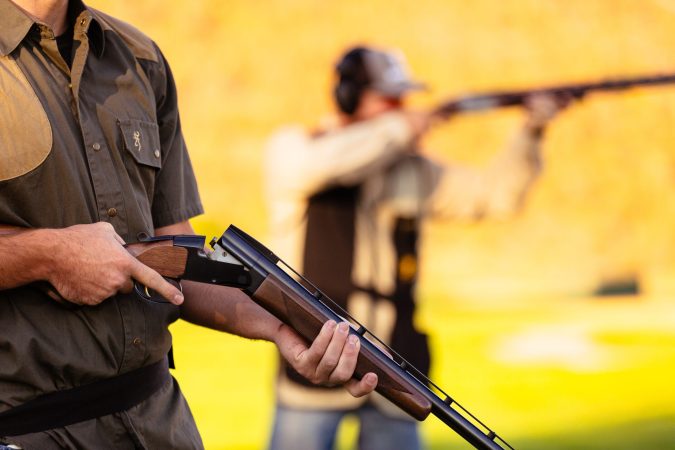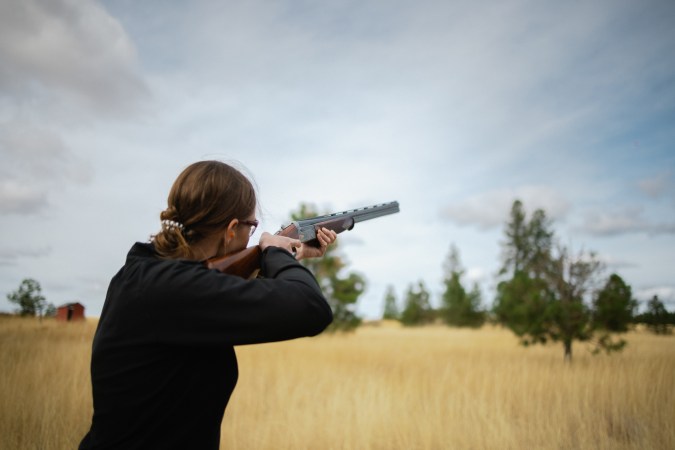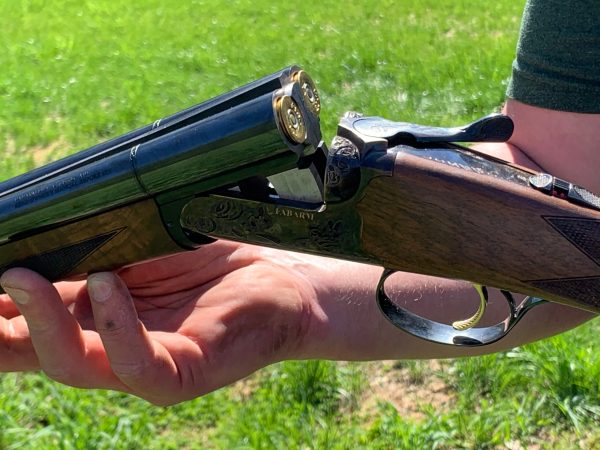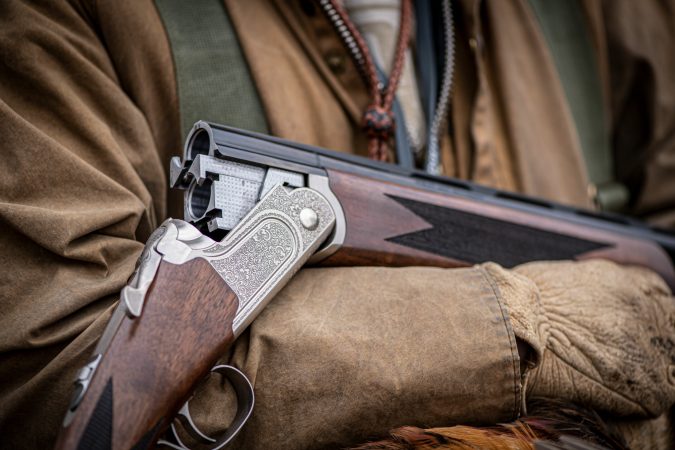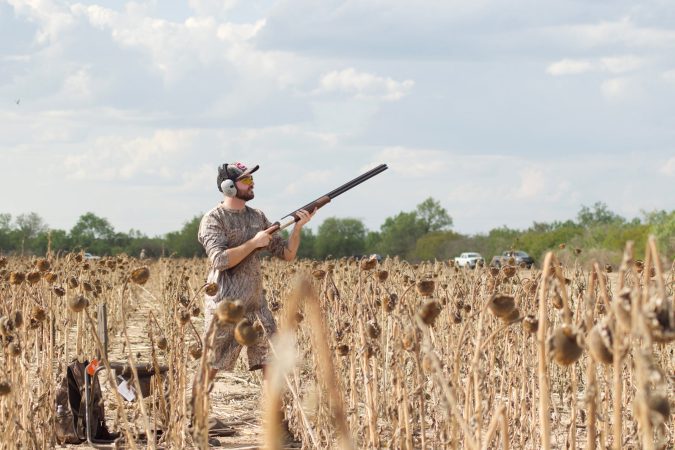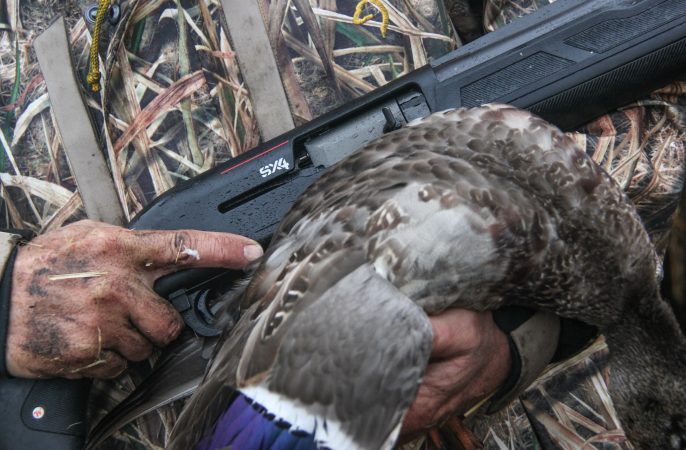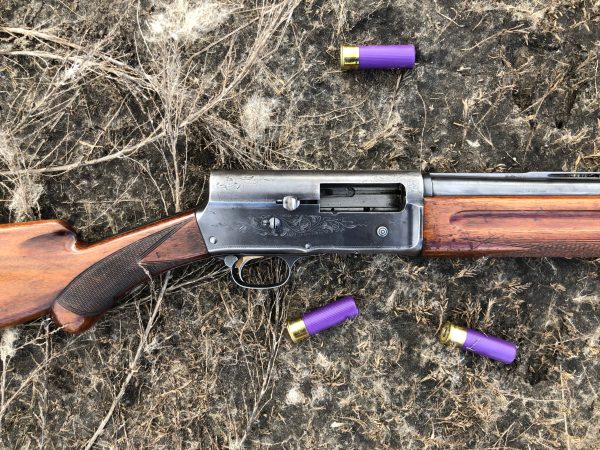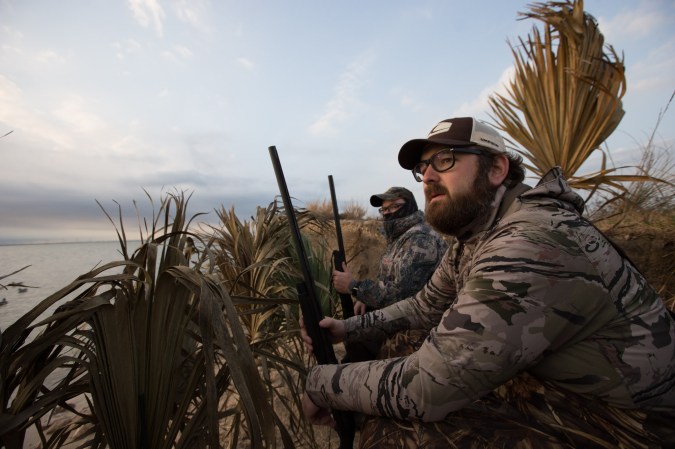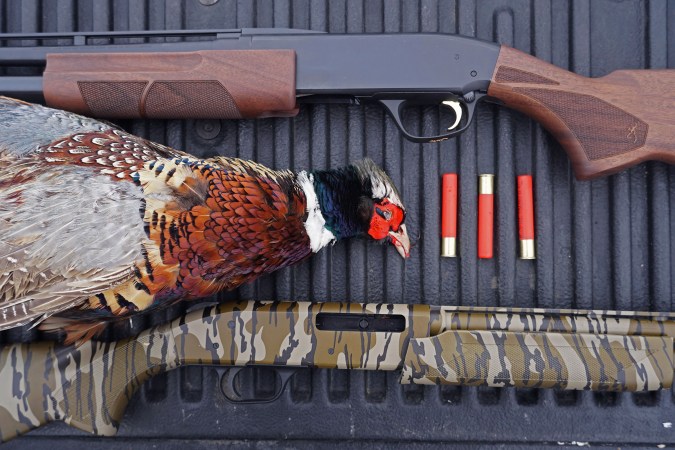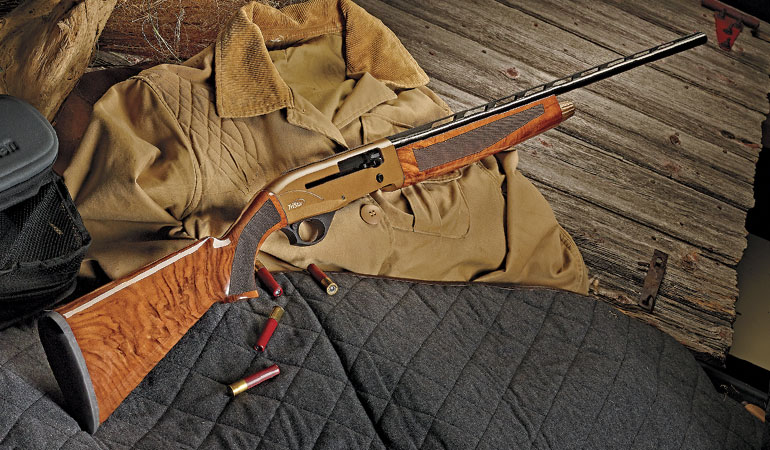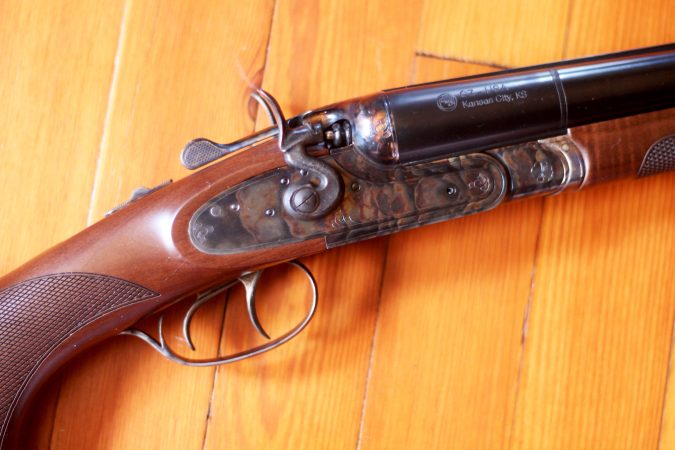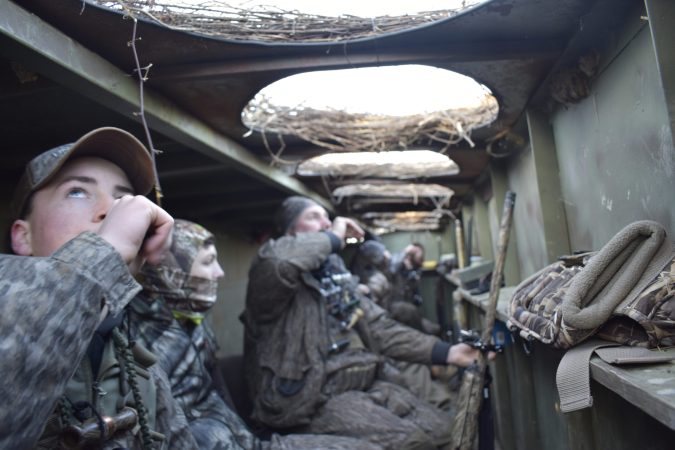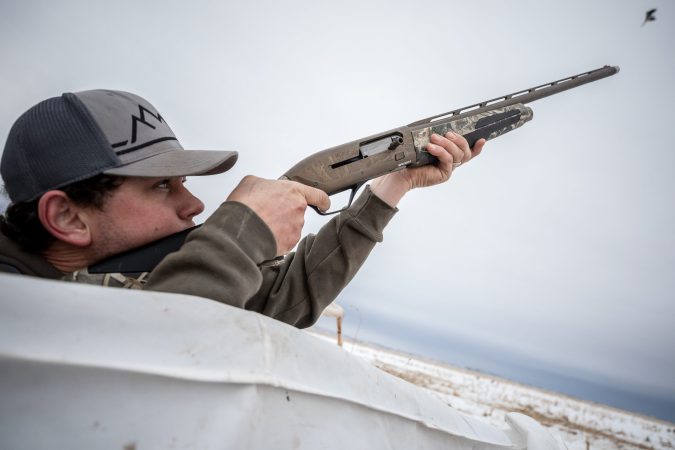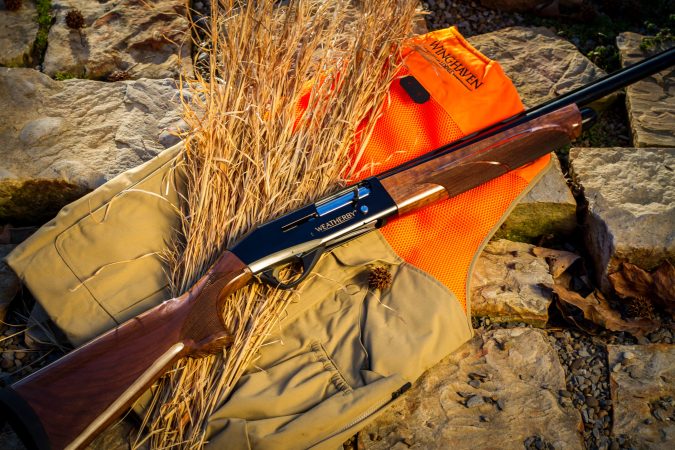We may earn revenue from the products available on this page and participate in affiliate programs. Learn More ›
I used to like a shotgun with a little thump to it. Then I started shooting skeet and realized that recoil offers no positive gains. Recoil is only a negative. It’s not a comfort issue, but a performance issue.
Find a way to reduce recoil and you’ll transition faster when shooting doubles, you’ll be able to shoot longer and you’ll maintain focus on the target clear through the break.
So how do you cut down on recoil? There are four factors you can address:
1 – Proper Gun Fit and Mount
A properly fitting shotgun is one that comes to your face and shoulder comfortably and centers the shot pattern where you want it. Exactly what is the “right way” for a shotgun to fit is somewhat subjective.
However, the one aspect of the gun’s dimensions that most influences felt recoil is length of pull. If length of pull is correct, your shooting-hand thumb should be about an inch from the lens on your safety glasses. If the gun is too long, you’ll definitely feel the recoil.
Even a gun that fits perfectly could give you fits with recoil if you don’t mount it the right way. Make sure the butt is in your shoulder pocket, not on your shoulder muscle, or you could end up with a colorful bruise. Mount the stock to your face. If you mount low, the recoil will cause more muzzle jump, which translates to a sore cheek.
2 – Add Weight
Heavy guns help dampen felt recoil. Many target over-unders fall into the 7 ½- to 9-pound range. To me, about 8 ½ pounds is perfect in an over-under for clay target shooting, but then I tend toward heftier choices and don’t have to lug my competition gun across hill and dale as hunters do.
Gas autoloaders can generally be lighter, since the action bleeds off some of the gasses that cause the gun to recoil back in the first place. But I still wouldn’t recommend anything with the word “feather” in its description if you’ll be doing high-volume shooting.
If you love your gun but she’s a dainty little thing, you can try adding weight. Fill a short piece of metal or plastic pipe with lead shot, cap the ends or tape them shut, and drop it into the stock’s bolt hole beneath the recoil pad. Just don’t get too carried away or you can alter the gun’s balance too much.
Companies such as Briley Manufacturing make barrel weights for over-unders that clamp on or screw together between barrels and weighted magazine tube caps for pumps and autoloaders. You can also try inserting lead weights into small holes drilled in the underside of the forend.
3 – Recoil-Reducing Devices
There are some great products out there for reducing recoil, but some are pricey and some flat out don’t work. Just about all attempt to do the same thing, which is to spread out the recoil over a longer period of time to reduce how much you actually feel it.
Squishy recoil pads, dense liquids like mercury, air chambers and springs are all used for various recoil systems that are popular with target shooters. A lot of the high-end models actually work pretty well, but they aren’t practical for a hunting gun.
If your gun has a hard plastic butt plate, by all means add a recoil pad if you can do it without ruining your length of pull. If the gun still punches too hard, you’ll need to look to one of the other four factors for relief.
4 – Ammo
Check your manhood at the door next time you buy shot shells. Do you really need 1 1/8 ounce 3 dram 12 gauge loads to win your Tuesday night trap club shoot? Hardly. Light loads, slower loads and smaller gauges break clays just as hard.
Even in the field, lighter loads cut down on flinches and make follow-up shots faster. Try them, and you might realize that you don’t need to sling 1 1/4 ounces at 1,500 fps toward every pheasant that flushes. After all, what’s really important is that the shot you take is on target in the first place.

